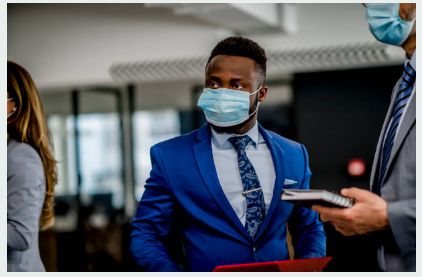They have become an indispensable object if we are to leave the house. The masks will surely be the utensils that we will remember the most in 2020, since right now they are used by millions of people from one end of the world to the other, making them an essential tool for when social distance from other people cannot be guaranteed.
In these moments of pandemic it is essential to respect security measures in the face of the threat of a possible outbreak that returns us to moments as bad as those experienced in the past month of March.
That is why it is vital that you always carry it with you to prevent a hypothetical contagion as much as possible. However, although they provide good protection against the virus, they also carry risks that cannot be overlooked.
A bad use of it can be worse than not wearing it, hence it is very important that from the first moment we put it on we avoid touching it or taking it off as little as possible.
Some studies done before the outbreak found that people had poorer hand hygiene when wearing the mask.
But beyond these obvious problems, wearing masks can also lead to unintended consequences. Olga Perski, researcher in the branch of health and social behavior at University College London (UCL) and David Simons, aspiring doctor of zoonotic infections at the Royal Veterinary College, have reflected on this. Both have published an interesting article in the magazine ‘Fast & Company’ in which they warn of various risks associated with this artificial defense against infectious agents.
The ‘Peltzman effect’
Firstly, Perski and Simons highlight what is known as the ‘Peltzman effect’. When accepting a security measure and incorporating it into habit, the individual tends to relax in other aspects of the same activity. For example, if we have gotten used to putting on our belts when we are driving, we are more likely to be more confident and confident and then we will step on the accelerator. If we transfer it to the Covid-19 crisis, the security provided by the mask can minimize the danger of other behaviors, such as hugging our friends or family. Or even simpler and more dangerous: not washing
Not being well placed
The other big problem to consider is the level of adherence that the mask has on our face. We have already observed that certain people have to be relocating it all the time because they fall or do not stay very fixed. In this sense, there are still no academic studies on how we can keep a mask in place for hours or minutes.
The most common risk that appears in public spaces is that of those who believe that just by protecting the mouth with it nothing happens anymore. No, the mask must cover the nose and mouth to avoid the risk of contagion as much as possible.
Touching your face too much
The mask is an element that, not being used to taking you with us, can make you uncomfortable. Especially now with the arrival of summer and the heat. Therefore, you are more likely to touch your face a greater number of times if you wear it than if you do not, which also entails a certain not insignificant risk. In addition, when putting it on and taking it off you must be very careful if we have not washed our hands before.
The environmental danger
Another scene of the most reprehensible that we have begun to see in our parks and streets: masks on the ground, next to the curbs of the road or badly thrown in the garbage and containers. Although there are still no conclusive figures of the environmental damage that are already causing the poor recycling of the masks, it is evident that in more or less time they will reach the rivers and oceans, endangering natural ecosystems and favoring global warming.














